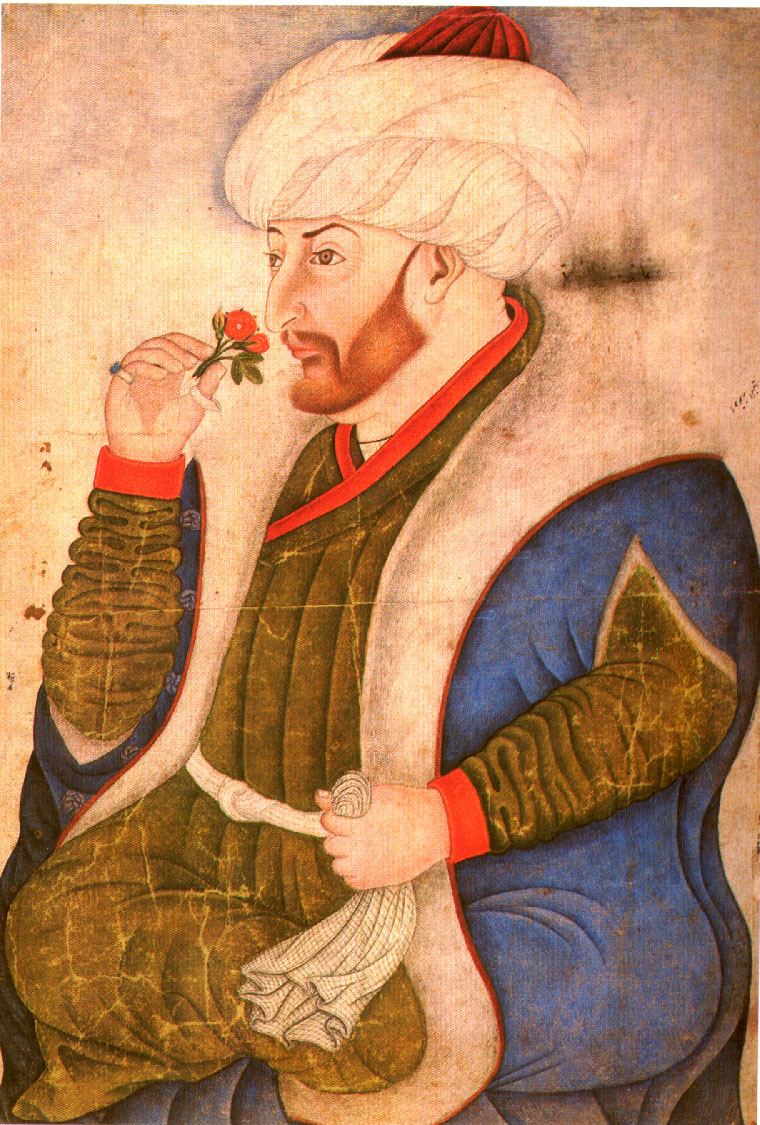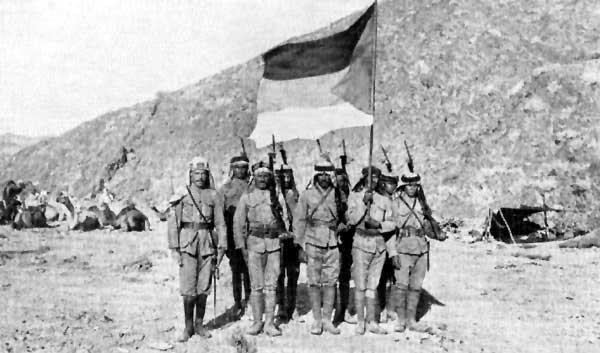THE DECLINE OF THE OTTOMAN EMPIRE: PART 3 NATIONALISM
In Part 1 of this series, we looked at what impact political and economic problems had on bringing down this long-lasting dynasty. In Part 2, a loss of Islamic character was analyzed in connection to the the overall decline and fall of the empire, despite the best efforts of Sultan Abdülhamid II. In this post, the far reaching effects of nationalism will be understood in relation to the ethnic and political groups within the Ottoman Empire.
The Millet System
Before looking at how nationalism affected the Ottomans, we have to look further back, at how different nationalities originally were a source of strength for the Ottomans. After Sultan Mehmed II conquered Constantinople in 1453, he had a unique problem on his hands: how to deal with the sizable Christian minority within his realm. Islam has numerous rules about how to treat religious minorities and what kinds of rights they are accorded. Working within these rules, Sultan Mehmed established a system later known as the millet system (millet coming from the Arabic word ملة meaning “nation”).

Sultan Mehmed II established the millet system, giving religious freedom to minorities in the Ottoman Empire
According to the millet system, Christians within the Ottoman Empire were allowed to live much like they did before Ottoman rule. They were allowed to chose their own religious leaders, collect their own taxes, use their own language, and even to have their own courts where Christians were tried according to Christian laws, not Muslim ones. This type of a system was revolutionary at that time in Europe, where in Christian-dominated areas, there was no concept of religious freedom or minority rights.
Over time, the millet system would grow to include more than just one group of Christians. To accomodate all the different forms of Christianity within the Ottoman realm, each church was given its own millet, and allowed to run by its own rules. Jews were also allowed to have their own millet. During the reign of Mehmed II’s son, Bayezid II, thousands of Jews who were experiencing religious persecution at the hands of Spain’s Catholics were welcomed into the Ottoman Empire where they were given much more religious freedom than anywhere else in the world at that time.
With the millet system, different nationalities, ethnicities, cultures, and religions were allowed to thrive. People commonly think of the Ottoman Empire as a “Turkish” empire. This is far from the truth. While the sultans from the beginning to the end were Turkish, the general populace was a wide variety of peoples. People within the millets were able to rise up in society to prominent positions. In fact, many of the sultan’s viziers (ministers) came from Greek, Bosnian, Arab, or Persian backgrounds.
European Nationalism
In 1789, a revolution began in France that would alter world history. The French Empire, headed by a tyrannical king was shaken to its core. The revolution helped bring Enlightenment ideas to the forefront in Europe, such as natural rights, government by the people, and social contract theory. However, besides the political effects of the revolution, a much more important social one was taking form: nationalism.
In Europe, the concept of nationalism took the form of people being led by ethnically similar people. The large multi-national empires of the past, such as the Holy Roman Empire or the Spanish Empire were seen as inherently weak because of the numerous nationalities and languages within the empire. Ethnic/linguistic groups began to revolt. The goal of many of these groups was to be led by someone who has the same ethnicity and language as them. Thus for example, the Dutch of Holland rejected Spanish rule, as did the Italians in Sicily. Revolutions broke out across the European continent, based on the idea of establishing nation-states: countries that only have one nationality within them, and are ruled by someone of that nationality.
This rising tide of nationalism made its way into the Ottoman Empire as well. Although the millet system gave people their rights and allowed them to rule themselves, European nationalism dictated that the ethnic minorities of the Ottoman Empire should not have a Turkish sultan. Nationalism meant that they had to break free of the Ottoman Empire and be led by their own people.
Such an idea did not just arise on its own within the Ottoman Empire. As previously stated, the millet system provided a framework for different nationalities to have rights and freedom within the Ottoman realm. With this type of contentment, average people were unlikely to rise up against their Ottoman governors. To provide the backbone for such revolutions, the major European powers of the day – Britain, France, and Russia – stepped in.
Revolts Against the Ottoman Government
European powers actively encouraged nationalities within the Ottoman empire to revolt throughout the 1800s. For example, the Greek revolution of 1821-1832 was strongly encouraged by other European powers, who sought to undermine and weaken the Ottomans. Not all Greeks were in favor of independence, in fact the Orthodox Patriarch, who was chosen by the Greeks in accordance with the millet system openly denounced the rebels in favor of unity with the Ottomans. However, the Greek revolutionaries were heavily aided by the British, who sent their navy (along with the Russians and the French) to battle the Ottomans on behalf of the Greeks. With the political and economic strains that the Ottomans were already facing at that time, they were unable to defeat this intervention by Europe and Greece was proclaimed independent of the Ottoman Empire.
With the successful nationalistic revolt of the Greeks, other minorities within the empire were encouraged to revolt. The Tanzimat reforms that were discussed in post 2 also helped to strengthen nationalist revolts. The Tanzimat encouraged all people within the Ottoman Empire to submit to a single code of laws, instead of allowing them the right to live according to their own ethnic/religious rules. Thus, more revolts ensued. The Serbians continued armed revolt against the Ottomans throughout the 1800s, and were strongly supported by the Russians. Armenians throughout Anatolia also revolted and were also supported by the Russians. Even fellow Muslims, the Bosniaks began to fight for independence, both because of nationalistic ideas and as protest against the un-Islamic reforms in the Tanzimat.
Turkish Nationalism
Perhaps the most bewildering forms of nationalism during the decline of the Ottoman Empire was the nationalistic ideas of the Turks and Arabs. Since 1517, the Turks and Arabs had been intimately linked within the Ottoman Empire. Their cultures and histories mixed, explaining the huge amount of loan words from each other in both languages today. Both had a very large role within the Ottoman Empire, and should have had every reason to see it succeed. However, the rising tide of European nationalism affected them as well.
In response to the revolts of the Greeks, Armenians, Serbians, and others, the Turkish leaders in the Ottoman Empire needed to find a way to counter the effects of such revolutions. While Sultan Abdülhamid II’s solution was pan-Islamic solidarity and an “Ottoman” identity instead of a nationalist identity in the empire, many others began to think of the Ottoman Empire as a purely Turkish state. They promoted the ideas that Turkish pride should be emphasized in the same way nationalist pride was prevalent throughout Europe. Turks began to promote themselves throughout government, and exclude others. This policy was promoted by the same group (the Young Turks) that promoted secularism and a movement away from Islam throughout the 1800s.
World War One and Arab Nationalism
As a reaction to the rise of Turkish nationalism, some Arab thinkers and political leaders began to formulate ideas of Arab nationalism. They looked back at the Abbasid and Umayyad days when Arabs were the leaders of the Muslim empire and hoped to create something similar. In their view, the Ottoman Turks had hampered the progress of the Arab world and held them back.
By the time World War One began in the summer of 1914, the Ottoman Empire was nothing but a shell of its former self. Its former lands in Europe were now gone as the Greeks, Bulgarians, Serbs, and Bosnians were all either independent or under European control. All that was left was the predominantly Turkish lands of Anatolia and the Arab lands south of it, including present-day Syria, Iraq, Palestine, and Saudi Arabia.

Soldiers of the Arab Revolt. The (British designed) flag of the Arab Revolt went on to be the basis of modern nationalistic flags of many Arab countries.
In WWI, the Ottomans sided with the Germans and Austrians against Russia, France, and Britain. Due to Turkish nationalism, the army was almost entirely made up of Turks, with Arabs excluded. Because of this, the British saw an opportunity to further break apart the Ottoman state. The British offered the Arab governor of Makkah, Sherif Hussain, his own Arab kingdom if he sided with them and revolted against the Ottomans. The British sent the later (in)famous T.E. Lawrence (aka, Lawrence of Arabia) to Hussain to convince him to revolt, and provide him with huge amounts of money and weapons.
With British encouragment, a group of Arabs from the Hejaz (Western Arabian Peninsula, including Makkah and Madinah), revolted against their brothers in Islam and sided with the British. From 1914 to 1918, the Arabs harassed the Ottoman forces throughout the Arab world. Because of the Arab Revolt, the British were able to easily conquer Iraq, Palestine, and Syria from the Ottoman Empire. For the first time since 1187, the holy city of Jerusalem was under the control of Christian Europe, this time because of the help given to them by nationalistic Arabs.
Final Destruction of the Ottoman Empire
World War One did not go with for the Ottomans. Invaded by European powers and revolted against by the Arabs, the Ottoman Empire essentially ceased to exist by the time the war was over in 1918. An ultra-nationalist Turkish leader, Mustafa Kemal Atatürk, took power in what was now known as Turkey, and declared it a purely Turkish state. Other nationalities were not welcomed in this new nation. In fact, huge population transfers occured between Greece and Turkey, with each expelling the other ethnic group from within its borders.
In the Arab world, the British (of course) did not keep their promise to Sherif Hussain. They had simultaneously decided to divide up the Arab world between Britain and France. Arbitrary lines were drawn on the map to divide up the Arab world into new states called Transjordan, Syria, Iraq, Lebanon, and Palestine. Zionist Jews were encouraged to settle in Palestine, creating a new Jewish state – Israel. Egypt continued under British domination to become its own nation, separate from the rest of the Arab world. What had once been the great Ottoman Empire was no more, it was replaced by numerous competing and disunited nationalistic states.
Conclusions
Like all empires throughout Islamic history and world history in general, the Ottomans did not last forever. They were the last great Muslim empire, finally ending just one generation ago. The reasons for their decline are many. Political corruption weakened them in the face of Europe’s rising power. Economically, many factors (both within and outside of Ottoman control) helped bring poverty and despair to the empire that was once the economic powerhouse of Europe. The Islamic character of the empire was lost. And finally, the European idea of nationalism dealt the empire its death-blow. The purpose of this series is not to languish on past failures and mistakes. It is to educate people, Muslim and non, to understand the mistakes of the past to help prevent the same mistakes in the future.
Bibliography:
Hodgson, M. G. S. The Venture of Islam, Conscience and History in a World Civilization. 3. Chicago, IL: University of Chicago Press, 1974.
Ochsenwald, William, and Sydney Fisher. The Middle East: A History. 6th. New York: McGraw-Hill, 2003.




No comments:
Post a Comment